Results 6,011 to 6,020 of 12096
Thread: Anandtech News
-
05-26-16, 06:34 PM #6011
Anandtech: Be Quiet! Introduces New Flagship Silent Base 900 Chassis
Be Quiet! has introduced its new flagship PC chassis, which combines the company’s expertise in building quiet PC components with extensive modularity and customization features. The be quiet! Dark Base 900-series PC cases will feature aluminum finish, whereas the Pro version will also come with LED strips as well as Qi wireless charger for mobile devices.
The new be quiet! Dark Base 900 and Dark Base 900 Pro chassis feature a modular design, which allows switching sides of the motherboard tray, adjusting its height, removing redundant HDD and ODD cages and, of course, installing any types of fans and/or liquid cooling. Since be quiet! is primarily known for silent PC equipment, the Dark Base 900 inherit numerous designs ideas from its predecessors, including internal architecture that optimizes airflow; specially designed noise intake systems; noise-cancelling side and front panels; decoupled fan, HDD and motherboards mounts to eliminate any transmission of vibration to the case and so on.
The Dark Base 900 and the Dark Base 900 Pro chassis from be quiet! can be equipped with up to two ODDs and up to seven HDDs. They also come with pre-installed three SilentWings 3 fans (one 120 mm fan and two 140 mm fans) and feature a basic fan control.
Unlike the previous-generation high-end PC cases from be quiet!, the new Bark Base 900-series chassis come with stylish brushed aluminum front and top panels, which feature four USB (two USB 3.0 and two USB 2.0) ports as well as 3.5-mm audio input and output.be quiet! Dark Base 900 and Dark Base 900 Pro Motherboard Size ATX, Micro-ATX, Mini-ITX Drive Bays External 2 × 5.25" Internal 7 × 3.5"/2.5" (Drive's cage) Cooling Front 3 × 140 mm or 3 × 120 mm (2 × 120 mm included) Rear 1 × 120 mm (included) or 1 × 140 mm Top 1 × 200 mm or 3 x 140 mm or 3 x 120 mm HDD/Side 2 × 120 mm Bottom 2 × 140 mm or 2 × 120 mm Radiator Support Front Unknown Rear Up to 140 mm (?) Top Up to 200 mm (?) Side - Bottom - I/O Port 2× USB 3.0, 2× USB 2.0, 1× Headphone, 1× Mic Power Supply Size ATX Dimensions Unknown Features of the Dark Base Pro · 4 mm tempered glass side panel
· LED strips
· Qi wireless charger for mobile devicesPrice Dark Base 900 — $199
Dark Base 900 Pro — $249
To appeal to modders and enthusiasts, the more sophisticated Dark Base 900 Pro chassis will also have a side panel made of 4-mm tempered glass, LED strips with five colors pre-installed as well as a Qi wireless charger for mobile devices. The Dark Base 900 Pro will be one of the world’s first PC cases with Qi charger, a decent addition to those, who are on the bleeding edge of progress and uses either devices with wireless charging, or cases with appropriate capabilities.
Both new cases from be quiet! will hit the market later this year and will be covered with a three-year limited warranty. As for the price, the Dark Base 900 will retail for $199, whereas the more advanced Dark Base 900 Pro will retail for $249.
Gallery: Be Quiet! Introduces New Flagship Silent Base 900 Chassis





More...
-
05-27-16, 07:23 AM #6012
Anandtech: Corsair's Bulldog PC Barebone for the Living Room is now Available: $299/$
Many PC and chassis makers these days are trying to address console gamers with computers that are as small as game consoles and fit into the living room design-wise, but which are considerably more powerful and can run games at ultra-high resolutions. When Corsair announced its plans to enter this market with its Bulldog concept a year ago, it was not exactly a big surprise: a company with expertise in cooling and PC chassis is arguably the best possible candidate to offer such kind of products. Even though some chassis designs seem to churn out over weeks, Corsair has taken over a year and a half to bring the final product to the market.
This week, Corsair finally started to sell the Bulldog chassis and barebones in North America and Australia. Corsair equips its Bulldog case with its H5 SF low-profile liquid cooler, which was specifically designed for mini-ITX systems and which performance is sufficient for all mainstream CPUs from Intel and AMD, its SF600 SFX PSU as well as two fans. The Bulldog case can house a mini-ITX motherboard, a full-height graphics card (which is not longer than 300 mm and is not thicker than 90 mm), a 3.5” HDD, up to three 2.5” storage devices, multiple fans as well as an SFX power supply. The price of the Bulldog chassis (CS-9000003-NA) is $299, just like Corsair promised a year ago.
The internal architecture of the Corsair Bulldog allows installing modern high-performance graphics cards, such as NVIDIA’s reference GeForce GTX 1080 with blowers. However, due to thermal constraints, Corsair recommends using its own H55 liquid cooling system with the HG10 bracket to cool-down GPUs, or install the AMD Radeon R9 Fury X or graphics cards with pre-equipped hybrid cooling.
Corsair also offers the Bulldog DIY PC barebone with pre-installed GIGABYTE GA-Z170N-WIFI motherboard. The GA-Z170N-WIFI supports all modern Intel Skylake-S processors in LGA1151 packaging (as well as, we assume, the next Intel generation of Kaby Lake processors), up to 32 GB of DDR4 memory, an M.2 slot for high-performance SSDs, a PCIe x16 slot for graphics cards, two Gigabit Ethernet ports, 2T2R 802.11ac Wi-Fi, integrated multi-channel audio, USB 3.0 (with Type-A and Type-C connectors) ports and so on. The Bulldog barebone kit (CS-9000001-NA) is priced at $399, in line with Corsair’s original promises. In addition, select PC makers and system integrators will offer pre-configured systems featuring Corsair’s Bulldog chassis, which will cost according to their specifications.
From an aesthetics point of view, Corsair has altered the design of its Bulldog compared to the prototype. Among some other things, it eliminated red inlays to make it look less aggressive in order to blend in with home theater surroundings. The chassis has retained its futuristic look as well as the ventilation capabilities, but now it matches various players and other equipment in terms of color scheme.Corsair Bulldog: Quick Specs Dimensions (W×H×D) 457 mm × 133 mm × 381 mm Weight 5 kilograms Motherboard Form-Factor Mini-ITX PSU Form-Factor SFX 3.5" Drive Bays 1 2.5" Drive Bays 1 if 3.5" drive is installed
3 if 3.5" bay is unusedSystem Fans 2 × 92 mm (included)
1 × 120 mmCPU Cooler Dimensions Up to 90 mm in height Graphics Card Length 300 mm PSU Length 130 mm External Connectors Power, Audio, USB 3.0, Display, etc

Even though Corsair’s Bulldog has hit the market somewhat later than expected, it still looks very promising thanks to the emergence of new 14nm and 16nm video cards this quarter that can better handle games in 4K resolution than previous-gen graphics adapters.
(Edit from Ian: I should also add a nod to Dustin Sklavos, former AnandTech editor for cases and cooling, who is the Corsair Product Manager for Bulldog and had a big hand in its design and development.)
More...
-
05-27-16, 08:08 AM #6013
Anandtech: Zotac and EVGA Reveal Custom GeForce GTX 1080 Designs
A few weeks back we saw the announcement of NVIDIA’s GeForce GTX 1080. NVIDIA put the founders cards on sale first, with third-party cards set to be released later. As we approach the sale date of the 1080 we can now lift the covers on the solutions other vendors will be releasing. Today features cards from both Zotac and EVGA.
Zotac will be releasing two custom version of the GeForce GTX 1080, the GeForce GTX 1080 Amp Edition and Amp Extreme. Both cards will receive their own revision of their Icestorm cooler. The key differences between the two for the cooler is that the the AMP Edition (pictured above) sports five heatpipes and two 100mm fans, while the AMP Extreme will have six heatpipes, three 90mm fans, and those fans will have a new design aimed at reducing the dead spot in the middle of the fan. Zotac claims that on the latter this will increase airflow and reduce noise.
Speaking of noise, both cards will have a 0 dB fan idle mode that they call Freeze, which stops the fan under low load situations. Each of these cards will be wearing what Zotac calls “Carbon Exoarmor”. Featuring a full backplate, a metal fan shroud, and what appears to be carbon fiber highlights.
To aid with fitting these cards in with any build these cards will feature Zotac’s all new Spectra lighting system. Meaning that these cards will have RGB LED’s on both the front and back of the card, and will be fully adjustable from the redesigned FireStorm App. Pricing and availability for these cards is not yet known.
EVGA’s entry into the ring is the EVGA GeForce GTX 1080 SC Gaming ACX 3.0. What this will mean is a card that carries the third iteration of their ACX 3.0 Cooler Featuring a 0 dB fan idle mode, RGB lighting, and a load of heatsink changes. EVGA is specific on two features of this cooler including their Straight Heat Pipe 3.0 technology which they say increase heat pipe and copper contact to increase cooling. They also note a cooling plate, a.k.a. heat spreader, that sits between the PCB and the heatsink to cool memory and MOSFETs.
Worth noting for these numbers is increased base and boost clocks to the tune of about 6%. A moderate but practical difference. Aside from that we are looking at the standard memory and memory speeds. EVGA will also be releasing Precision X 6.0 to Coincide with the upcoming release. The EVGA GeForce GTX 1080 SC Gaming ACX 3.0 card will release in early June for $649.99.GTX 1080 Specification Comparison EVGA GTX 1080
SC GamingGTX 1080
Founders EditionCore Clock 1708MHz 1607MHz Boost Clock 11847MHz 1733MHz Memory Clock 10Gbps GDDR5X 10Gbps GDDR5X VRAM 8GB 8GB TDP 180W 180W Launch Date Early June 5/27/2016 Launch Price MSRP: $649.99 MSRP: $699
As the incoming hardware approaches we can look forward to learning more of what the market will bring us. Today saw the announcement of cards from Zotac and EVGA, though I’m sure we’re bound to see many more releases as summer comes upon us. Be sure to keep an eye out here in the coming weeks as review samples start to trickle in.
More...
-
05-27-16, 09:49 AM #6014
Anandtech: FSP Announces Twins: 500W and 700W ATX PSU with Redundancy Capability
FSP this week announced its new series of redundant PSUs called the 'Twins'. The new power supplies are compatible with standard ATX and PS2 tower chassis, but provide redundancy capabilities and can thus enable building non-stop servers using 'relatively affordable' components.
The manufacturer positions the FSP Twins PSUs for home and SMB mail, web and intranet servers when building in a standard ATX or PS2 tower chassis. Like other redundant power supply units, the FSP Twins houses two hot-swappable PSUs and if one fails, another immediately kicks in, ensuring that the system never stops due to power supply failure. Both PSUs can be replaced without shutting down the machine, similar to typical datacenter-class mission critical servers. The PSU modules are proprietary, and each has its own 40-mm high-pressure server-grade fan, implying they have the potential to be pretty noisy. The FSP Twins series come with special firmware and sensors that monitor over-current, short-circuit, over-voltage, or fan failure, and the special LED indicators can alarm users of any problems.
Initially, FSP will offer two Twins models with 500W and 700W PSUs. The Twins will have EPS12V power connectors (one 24-pin and two 4+4-pin connectors) and will thus be able to handle dual-socket (or even multi-socket) motherboards up to the power capacity. The 500W version will feature two PCIe 6+2-pin power connectors, six SATA power connectors, two Molex plugs, one connector for floppy drives and one 8-pin USB connector to interface with monitoring software. FSP notes that all cables supplied with the Twins are flat in a bid to enable easier cable management in space-constrained chassis. The specifications of the 700W unit have not been announced as of yet.
The FSP’s Twins series is not the first attempt to wed ATX/EPS12V PSU form-factor with redundancy. However, some of the predecessors of Twins did not have enough wattage for modern servers, poor serviceability, or became EOL quite quickly for replacement components. Moreover, keep in mind that an ATX chassis is not particularly designed for a server, despite the homebrew market, which is why the market for such PSUs is relatively small.Brief Specifications of FSP's Twins PSU Connectors 500 W 24-Pin 1 4+4-Pin 2 6+2-Pin PCIe 2 SATA 6 Molex 2 Floppy 1 USB 8-Pin 1
The FSP Twins 500W will cost $399, which comes across as a reasonable price for a redundant PSU module that is essentially two 500W units. The price of a 700W version is being determined, as is the individual units themselves. Both will come with a five-year limited warranty later this year. FSP will demonstrate its Twins series at the Computex Taipei 2016 trade show next week.
More...
-
05-27-16, 01:40 PM #6015
Anandtech: Corsair Launches Dominator Platinum Memory Modules for ASUS ROG Systems
Corsair has introduced its new custom-built kit of Dominator Platinum memory modules, which are specifically designed for ASUS ROG motherboards. The new DDR4 modules contain an exclusive SPD profile, which is only available on select ASUS ROG platforms featuring Intel’s Z170 PCH (platform controller hub).
The Corsair Dominator Platinum ROG Edition kit (CMD16GX4M4B3200C16-ROG) consists of four 4 GB DDR4 memory modules rated to run at 3200 Mbps data-rate with CL16 18-18-36 timings at 1.35 Volts. The modules are primarily designed for Intel’s Skylake-S processors when used in Intel’s Z170-based motherboards that support XMP 2.0 technology (to automatically set their frequencies and latencies when they are installed into appropriate PCs and the BIOS option is selected). However, when the Dominator Platinum ROG Edition kit is installed into one of ASUS ROG motherboards featuring the Z170 chipset, it allows setting 3333 Mbps data-rate and CL16 timings.
The Dominator Platinum ROG Edition modules are based on binned DRAM chips as well as Corsair’s proprietary 10-layer PCB with internal cooling planes as well as external thermal pads. For improved cooling and visual aesthetics, the modules come with aluminum heat-spreaders and customizable LED lighting. The memory sticks also feature famous Republic of Gamers red and black brushed aluminium finish, to compliment the current-generation ASUS ROG line of motherboards.
As for the price, the Corsair Dominator Platinum ROG Edition kit represents a premium, much like other DDR4-3200+ kits. The set of four ROG-branded modules costs $224.99 excluding taxes in the U.S., which is considerably higher than the price of any other 16 GB DDR4-3333 kit. The Dominator Platinum ROG Edition kit is also more expensive than Corsair’s own Dominator Platinum 16 GB DDR4-3200 CL15 (4 x 4 GB kit), which is priced at $189.99. Possibly, an exclusive SPD setting, custom-painted heatsinks as well as elite Republic of Gamers brand add a tangible amount of money to the price tag, but is aimed squarely at users with specific ROG motherboards.
The list of compatible motherboards looks as follows:
- ROG Maximus VIII Formula
- Maximus VIII Hero
- ROG Maximus VIII Extreme/Assembly
- ROG Maximus VIII Hero Alpha
- Maximus VIII Impact
- Maximus VIII Extreme
- Maximus VIII Ranger
- Maximus VIII Gene
More...
-
05-28-16, 04:00 PM #6016
Anandtech: Plextor to Demonstrate M8Pe Flagship SSD, EX1 USB Type-C SSD at Computex
Plextor plans to showcase its new SSDs next week at Computex 2016 trade show in Taipei, Taiwan. The new M8Pe will be the company’s new flagship storage solution and also the first high-end drive from the company in two years. Meanwhile, the EX1 will be Plextor’s first external solid-state storage device designed for those, who demand ultra-fast flash drives. In addition, the firm will demonstrate its next-generation mainstream M8Se SSD at the trade-show.
The Plextor brand got famous back in the 1990s, when the company introduced its first optical disc drives, which eventually were recognized as one of the finest quality ODDs in the industry. Eventually, the company experimented with other products as well, but its ODDs based on precision electric motors from Shinano Kenshi (the owner of the trademark) were still the best known devices featuring the name. Fast forward to 2010, Lite-On Technology licensed the Plextor brand, hired a team of engineers and teamed up with Marvell and Toshiba to develop SSDs, which would match the legendary name with performance and quality. Over the following years, Plextor/Lite-On released a number of SSDs that became popular among enthusiasts, which is why every new product by the company gets a great deal of attention. The years 2014 and 2015 were not exactly good for Plextor, though: the company ran into problems with its M6 Pro and then had to cancel the M7e. As a result, Plextor’s high-end lineup has not been updated for two years now, a very long time for the rapidly developing solid-state storage industry. However, the new flagship from the popular brand appears to be just around the corner and on paper it looks quite good.
The Plextor M8Pe family of SSDs will be based on Marvell’s 88SS1093 controller as well as Toshiba’s MLC NAND flash memory made using 15 nm manufacturing technology. The 88SS1093 features three cores and supports Marvell’s third-generation NANDEdge error correction control and management technology, which is based on LDPC (low-density parity-check code) and is designed to improve reliability of planar MLC and TLC NAND flash memory made using 15 nm fabrication process. Besides this, the controller fully supports NVMe protocol as well as new power management technologies.
The M8Pe drives will be available in 128 GB, 256 GB, 512 GB and 1 TB configurations. Plextor is specing the M8Pe 1 TB at up to 2500 MB/s for sequential reads and up to 1400 MB/s for sequential writes, but more affordable models will feature considerably lower speeds. The highest-capacity M8Pe can also perform up to 280K random read IOPS as well as up to 240K random write IOPS. Plextor’s numbers look rather competitive against Samsung’s 950 PRO, but we will need to test the novelty first before drawing any conclusions here.
As for form-factors, expect the new M8Pe flagship drives from Plextor to be available in both add-in PCIe 3.0 x4 card as well as M.2-2280 versions. It is noteworthy that the rated performance of the M8Pe drives in different form-factors is equal. The SSDs will feature heatsinks to prevent overheating of components as well as illuminating LEDs to complement modern high-end motherboards and PC chassis.Specifications of Plextor M8Pe SSDs 128 GB 256 GB 512 GB 1 TB Model PX-128M8PeY
PX-128M8PeGPX-256M8PeY
PX-256M8PeGPX-512M8PeY
PX-512M8PeGPX-1TM8PeY
PX-1TM8PeGForm Factor PCIe HHHL
M.2-2280PCIe HHHL
M.2-2280PCIe HHHL
M.2-2280PCIe HHHL
M.2-2280Controller Marvell 88SS1093 Interface PCIe 3.0 x4 Protocol NVMe 1.2 DRAM 512 MB 1 GB NAND Toshiba's MLC NAND made usin 15 nm process technology Sequential Read 1600 MB/s 2000 MB/s 2300 MB/s 2500 MB/s Sequential Write 500 MB/s 900 MB/s 1300 MB/s 1400 MB/s 4KB Random Read (QD32) 120K IOPS 210K IOPS 260K IOPS 280K IOPS 4KB Random Write (QD32) 130K IOPS 230K IOPS 250K IOPS 240K IOPS MTBF 2.4 million hours Launch Date June 2016
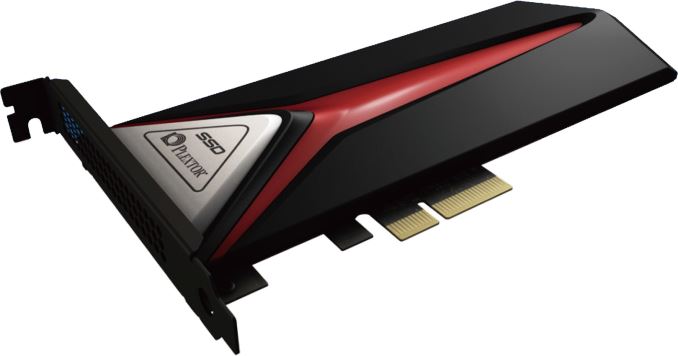
In addition to the flagship M8Pe, the Plextor will also demonstrate its forthcoming mainstream product, the M8Se. This SSD will come in an M.2 form-factor and will feature PCIe interface. At this time we have no information about the controller or NAND used by the M8Se.
Finally, the Plextor EX1 will be the brand’s first external fixed storage solution in a decade. The EX1 will be offered in 128 GB, 256 GB or 512 GB capacities. The maximum transfer rate of the drive will be 500 MB/s, which means that we are talking about an SSD and not just another USB flash stick. As for the interface, the EX1 will rely on USB Type-C (USB 3.1 Gen 1, 5 Gbps) and will thus be compatible with the latest PCs. While a fast external SSD from Plextor seems to be an interesting product, it remains to be seen which of Plextor’s exclusive technologies it will support, given the size and other constraints. Earlier this year we reviewed the Samsung T3 external USB-C SSD and it left a very positive impression. Plextor’s EX1 will offer some competition to Samsung’s external SSD.
The M8Pe SSDs from Plextor are expected to hit the market already in June. Pricing information has yet to be disclosed, but we do know that the drives will be backed by a five-year warranty. Further details regarding the M8Se and EX1 SSDs are unknown, but we'll publish that information once its available.
More...
-
05-29-16, 11:04 PM #6017
Anandtech: The ARM Cortex A73 - Artemis Unveiled
It’s only been a little over a year since we had a good look into ARM’s Cortex A72 presented at ARM’s TechDay event in London. Over the span of this year we’ve seen various vendors not only announce SoCs with the new core IP but actually deliver devices in high volume. HiSilicon’s Kirin 950/955 definitely left a long-standing impression on the industry by providing incredible power efficiency gains while continuing to improve performance.
Fast-forward to 2016. Another year, another TechDay, this time from ARM’s brand-new offices in Austin Texas. So for today we have the pleasure to have a very deep look at ARM’s new Artemis CPU microarchitecture:
More...
-
05-29-16, 11:04 PM #6018
Anandtech: ARM Details Built on ARM Cortex Technology License
As part of today's announcements, we're able to provide more information on ARM's new "Built on ARM Cortex Technology" license. The license was first officially revealed in ARM's quartely financial call back in February, however at the time the company wasn't ready to talk about the exact details of this new license.
We covered ARM's business and licensing models back a few years ago in a dedicated article which goes into more depth what kind of options vendors have when deciding to license an ARM IP. ARM likes to represent the licensing model in a pyramid shape with increasing cost and involvement the higher you get on the pyramid. Until now vendors had two main choices: Use one of the various available Cortex licenses, or get an architectural license and develop one's own microarchitecture based on ARM's ISA.
The former licensing options varied depending on what kind of engagement and deployment a vendor is looking for. Lead licensees for example get early access to new microarchitectures but also have to pay more for this access and it's possible that they will have to deal with still immature toolkits and documentation, both which would then require move engagement and investment on their part. Vendors who are willing to wait a bit more or who aren't looking in an as deep engagement are able to use some of the cheaper licenses and more mature tools and documentation.
The common limitation of all current Cortex licenses however is that a vendor is not able to change any aspect of the microarchitecture. If a customer needed a feature that ARM's cores didn't provide, they had to go with an architectural license and develop their own microarchitecture from scratch. Currently such licensees with shipping custom microarchitectures include Apple, Qualcomm and Samsung.
The new license being detailed today is the "Built on ARM Cortex Technology" license, which is quite a mouthfull and will unofficially refer to as "Built on Cortex"/BoC from here on. The new BoC license represents a new "tip of the pyramid" for Cortex licenses with even greater engagement than that of lead licensees.
The new license allows vendors to request changes of an ARM microarchitecture and use this customized IP in their products. The way this works is that basically ARM provides its engineering and design services to the vendor who wants a certain aspect of an "off-the-shelf" Cortex design customized. Under the license's terms, ARM still owns and controls the IP, however the changes requested for that particular vendor's design is not shared or made available to other vendors.
An example of a customization that a vendor would be able to request is the instruction window size. An increase in the instruction window size would increase the IPC of a microarchitecture, however this can cause higher area and power which would need to be compensated by more implementation work by the vendor.
While ARM didn't want to go into details of what other customization options a vendor would have, they say that it will have a rather limited scope and things such as altering decoder width or changing the execution resources of a microarchitecture are beyond the scope of the license. In general, it seems more that the license is meant to allow vendors to tweak and configure the knobs on some aspects of a microarchitecture rather than do significant changes to the way the µarch works.
What is in my view the most important and controversial aspect of the new license is that it allows vendors full branding freedom on this customized CPU design. This means that a Built on Cortex licensee is free to give the resulting new core any name it sees fit. We'll however still be able to differentiate the core from a full custom microarchitecture as ARM still requires a disclaimer / footnote / subtitle with the "Built on ARM Cortex Technology" phrase.
In February ARM disclosed that Qualcomm is the first costumer signed up for this license, and what this means for the Snapdragon SoC lineup is currently still unclear. If this new licensing model will be able to allow vendors to truly differentiate their products beyond just the marketing aspect is something we won't know until the first designs come out and will be tested, and until then, the verdict on ARM's new license is still open.
More...
-
-
05-30-16, 03:09 AM #6020
Anandtech: ASUS Announces the ZenFone 3 Series, with 6 GB Deluxe Model and 6.8-inch U
Today at Computex, as part of their annual Zen press conference, ASUS lifted the lid on the Zenfone 3 series. In previous Zenfone generations, the Zenfone has been one of the premier devices featuring Intel’s Atom smartphone chipset, however due to the announcement that Intel has cancelled their Atom smartphone ‘Broxton’ program ASUS is going all in with a series of Qualcomm chipsets, including the custom Kryo based Snapdragon 820 and also the first 14nm Snapdragon 625 device.
The Zenfone 2 line is known for having numerous, region specific models over its lifespan. To start, the Zenfone 3 will come in three formats and sizes: the base Zenfone 3 (ZE552KL), the premium Zenfone 3 Deluxe (ZS570KL) and the media-consumption focused Zenfone 3 Ultra (ZU680KL).
We were able to get a quick preview the day before the announcement, and had some hands-on time:
The black model is the base Zenfone model, featuring a Snapdragon 625 (dual 4xA53), and comes with Gorilla Glass 3.0 on the front and sides with 2.5D for the contouring on the edge. This model will feature up to 4GB/64GB, a Sony IMX298 rear camera, 2x2 dual-band 802.11ac WiFi, up to Cat 6 LTE, dual SIM and a USB 2.0 but Type-C based connector. The screen is a 5.5-inch Super IPS+ LCD, and runs Android Marshmallow with ZenUI 3.0.
The gold model is the Zenfone Deluxe, designed to be the high-end model with the main focus on the Snapdragon 820 (using Qualcomm’s custom Kryo cores, similar to the LG G5 and certain Samsung Galaxy S7 models) and having up to 6 GB of memory. So add to this on the storage of up to 256 GB, supporting the UFS 2.0 standard, and an upgraded 23MP Sony IMX318 rear camera and USB 3.0 (again, via Type-C), and ASUS hopes to be challenging some of the high-end devices. The unibody design aims for a seamless rear, with no antenna banding or windows, instead going for a small hole on the side of the phone at the top which, according to ASUS’ internal metrics, should be sufficient. The Deluxe will support Quick Charge 3.0 and has a similar 3000 mAh battery to the base model.
The large 6.8-inch Zenfone 3 Ultra is what ASUS is calling its ‘multimedia Smartphone’, aiming to combine the use case of a tablet with a smartphone. We’ve seen large smartphones before (like the Huawei P8 Max) but these tend to be region focused: I was told that the Ultra will be coming to the US in some form over the next few months. The Ultra runs a Full HD display (1920x1080) like the other two devices, but uses ‘ASUS Tru2Life’ technology based on Pixelworks’ 4K TV processor which also featured in the ZenPad S 8.0. This is supposedly an upgraded version over the ZenPad S 8.0, and it will be interesting to see Brandon’s reaction to it over the ZenPad. ASUS is equipping the Ultra with the Snapdragon 652 (4xA72, 4xA53), with up to 4GB/64GB and a 4800 mAh battery. ASUS is keen to promote that the phone can also act like a power bank and offers reverse charging. The Ultra will also come with DTS HD Premium Sound and Headphone 7:1 support, allowing for hi-res audio support up to 24-bit/96 kHz, and aiming squarely at the multimedia experience.
All three will feature fingerprint sensors, with the base model and the Deluxe having a rear touch sensor, the Ultra having a button sensor on the front, and all three supporting five fingers of recognition. They will all support ASUS’ PixelMaster 3.0 camera features: an f/2.0 6-element lens, 4-axis photo OIS, 3-axis EIS and dual tone LED flash. ASUS wants to promote its TriTech autofocus technology, enabling focus via contrast, phase and a second generation laser (capable up to 1.2m) for a 0.03-second autofocus system (ASUS states that around 250,000 pixels have left/right light detection to aid this). An 8MP front camera is on the front of all the cameras also.ASUS Zenfone 3 Series Zenfone 3
ZE552KLZenfone 3 Deluxe
ZS570KLZenfone 3 Ultra
ZU680KLDisplay 5.5-inch
Super IPS+ LCD
1920x10805.7-inch
SuperAMOLED
1920x10806.8-inch
IPS LCD
1920x1080SoC Snapdragon 625
4xA53 @ 2.0 GHz
4xA53 @ 1.4 GHzSnapdragon 820 Snapdragon 652
4xA72
4xA53GPU Adreno 506 Adreno 530 Adreno 510 DRAM Up to 4 GB Up to 6 GB Up to 4 GB Storage Up to 64 GB Up to 256 GB
(UFS 2.0)Up to 128 GB Front Camera 16MP Sony IMX298
f/2.0, 6-element23MP Sony IMX318
f/2.0, 6-elementRear Camera 8MP, 85-degree WiFi 2x2 802.11ac with MU-MIMO 4G Category 6 Category 13, 3xCA Category 6 Connectivity Type-C USB 2.0 Type-C USB 3.0 Type-C USB 2.0 Battery 3000 mAh 4800 mAh Colors Shimmer Gold
Aqua Blue
Sapphire Black
Moonlight WhiteTitanium Gray
Glacier Silver
Sand GoldTitanium Gray
Glacier Silver
Rose PinkOS Android M with ZenUI 3.0
We’re writing this before the announcement, and we expect pricing to be specified during the presentation along with the time for device rollout.
Gallery: ASUS Announces the ZenFone 3 Series, with 6 GB Deluxe Model and 6.8-inch Ultra Model





More...
Thread Information
Users Browsing this Thread
There are currently 41 users browsing this thread. (0 members and 41 guests)




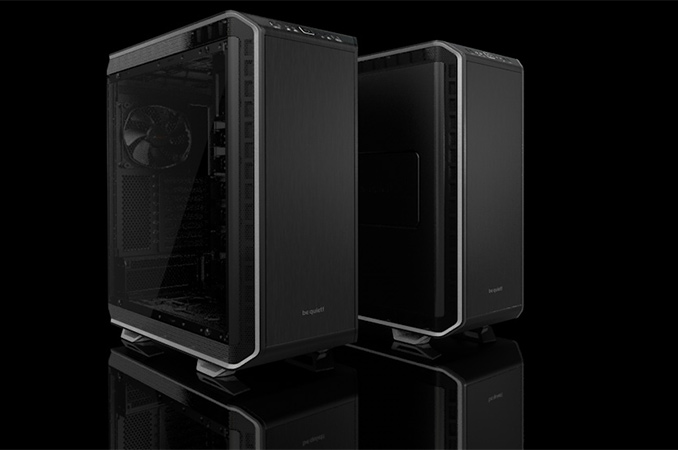

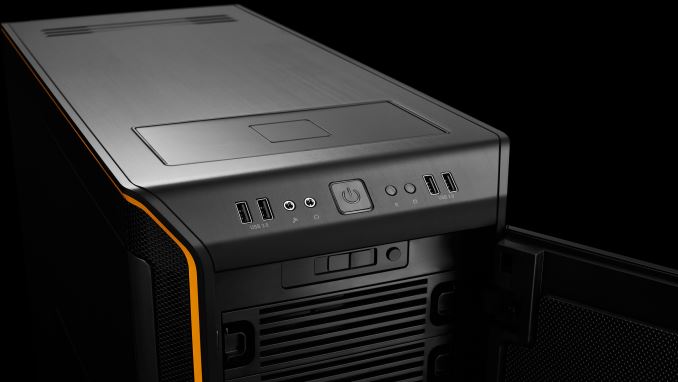


 Quote
Quote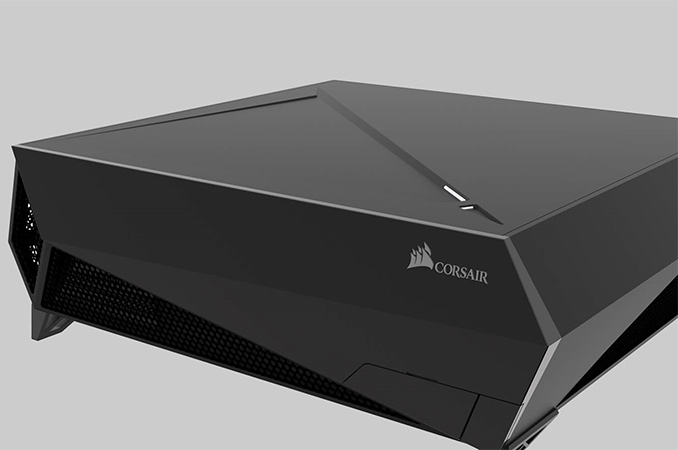


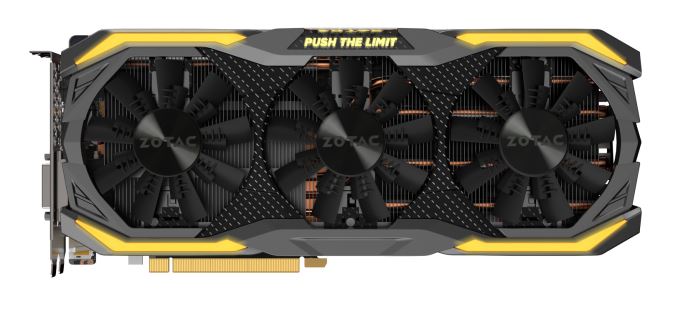
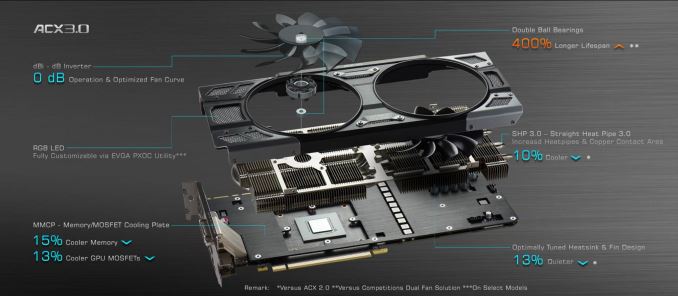
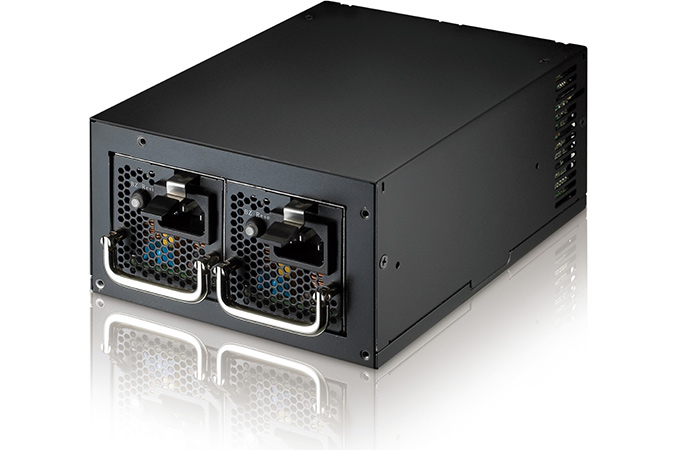
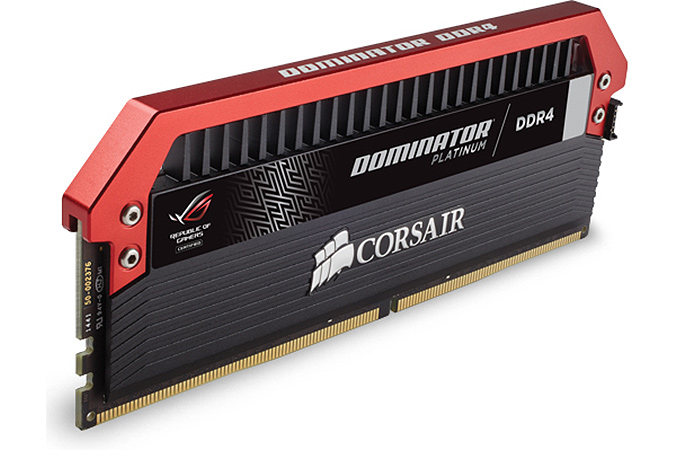
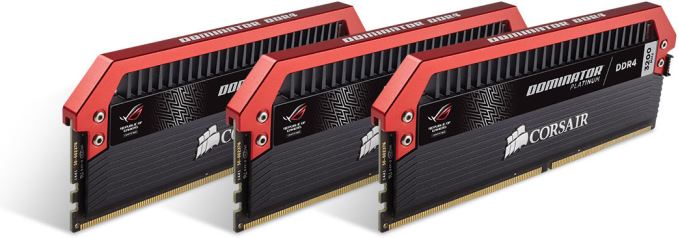
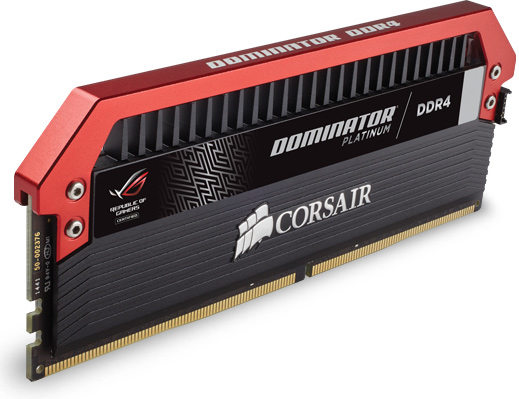




























Bookmarks